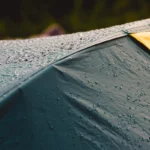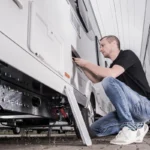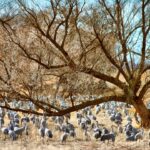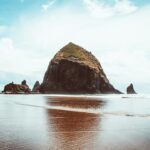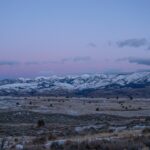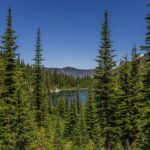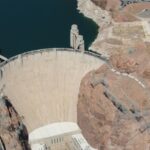Overlanding has become increasingly popular in recent years as people seek out unique and adventurous ways to explore the great outdoors. It involves self-reliant travel to remote and often off-road locations, typically in a 4×4 vehicle or camper. One destination that offers a truly captivating overlanding experience is Nebraska’s Great Plains.
Nebraska’s Great Plains is a vast and diverse region that stretches across the state, offering overlanders a chance to immerse themselves in the natural beauty and rich history of the area. From rolling grasslands to unique geological formations, there is something for everyone to discover in this unique landscape.
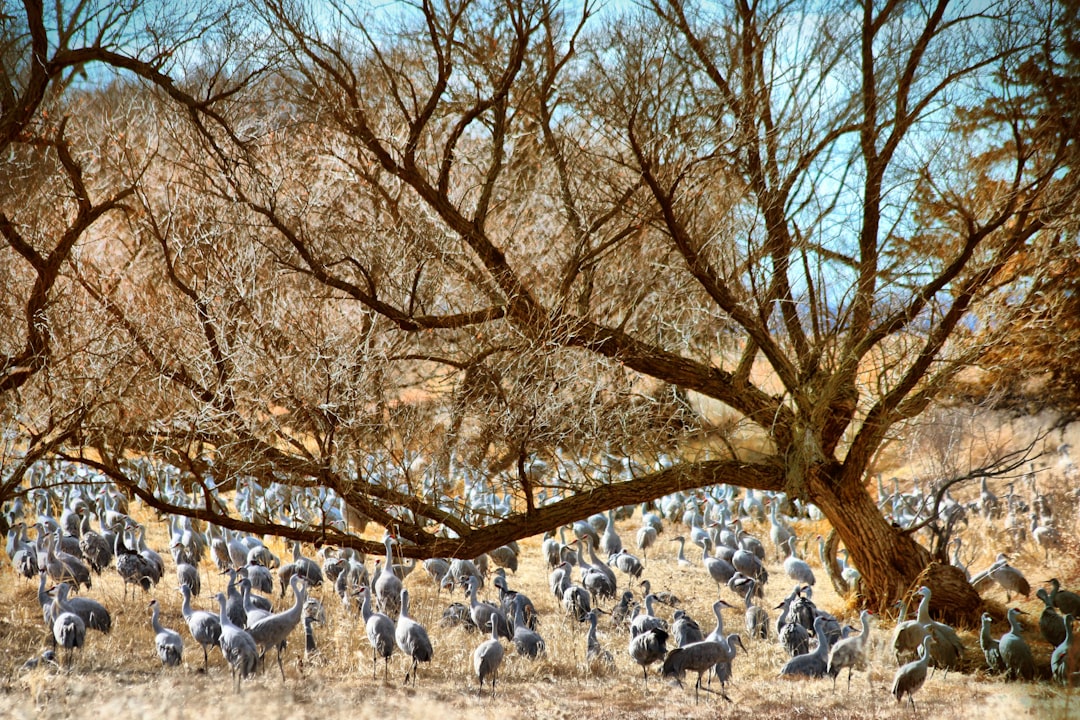
Discovering the Natural Wonders of Nebraska’s Great Plains
Nebraska’s Great Plains is home to a wide range of natural wonders that will leave overlanders in awe. The region boasts unique geological formations such as the Sandhills, which are the largest sand dune formation in the Western Hemisphere. These towering dunes provide a stunning backdrop for any overlanding adventure.
In addition to the Sandhills, Nebraska’s Great Plains is also known for its expansive grasslands, which are home to a diverse array of wildlife. Overlanders can expect to encounter bison, pronghorn antelope, and various bird species as they traverse the open plains. The region is also home to several lakes and rivers, providing opportunities for fishing and water-based activities.
While exploring the natural wonders of Nebraska’s Great Plains, it is important for overlanders to remember the importance of preserving and respecting the environment. This means practicing Leave No Trace principles, staying on designated trails, and avoiding disturbing wildlife or damaging vegetation.
Overlanding Routes and Trails in Nebraska’s Great Plains
Nebraska’s Great Plains offers a variety of overlanding routes and trails that cater to different skill levels and interests. From easy scenic drives to challenging off-road trails, there is something for every overlander in this region.
One popular route is the Sandhills Journey Scenic Byway, which takes travelers through the heart of the Sandhills region. This route offers stunning views of the sand dunes and allows overlanders to experience the unique beauty of this area.
For those seeking a more challenging off-road experience, the Nebraska National Forest offers several trails that wind through the rugged terrain. These trails require a high-clearance 4×4 vehicle and offer a thrilling adventure for experienced overlanders.
When planning an overlanding trip in Nebraska’s Great Plains, it is important to research and prepare for the specific routes and trails you plan to explore. This includes checking for any permits or restrictions, ensuring your vehicle is properly equipped, and having a detailed map or GPS system.
Camping and Accommodation Options in Nebraska’s Great Plains
| Camping and Accommodation Options in Nebraska’s Great Plains | Number of Sites/Rooms | Cost per Night | Amenities |
|---|---|---|---|
| State Parks | Varies by park | 15-35 | Campfire rings, picnic tables, showers, restrooms, hiking trails |
| Private Campgrounds | Varies by campground | 20-50 | Campfire rings, picnic tables, showers, restrooms, swimming pools, playgrounds |
| Hotels/Motels | Varies by establishment | 50-150 | Free Wi-Fi, cable TV, air conditioning, continental breakfast, swimming pools, fitness centers |
| Bed and Breakfasts | Varies by establishment | 75-200 | Free Wi-Fi, private bathrooms, homemade breakfast, gardens, historic charm |
Nebraska’s Great Plains offers a variety of camping locations and accommodation options for overlanders. From primitive campsites to full-service RV parks, there is something to suit every traveler’s needs.
For those who prefer a more rustic experience, there are numerous primitive campsites scattered throughout the region. These sites often offer basic amenities such as fire rings and pit toilets, but do not have access to water or electricity. This allows overlanders to truly immerse themselves in the natural surroundings.
If you prefer a bit more comfort, there are also several developed campgrounds and RV parks in the area. These sites typically offer amenities such as water and electric hookups, showers, and laundry facilities. They are a great option for those who want to enjoy the beauty of Nebraska’s Great Plains while still having access to modern conveniences.
When choosing a camping or accommodation option, it is important to consider factors such as location, amenities, and availability. It is also recommended to make reservations in advance, especially during peak travel seasons.
Wildlife Watching and Birding in Nebraska’s Great Plains
Nebraska’s Great Plains is a haven for wildlife enthusiasts and birdwatchers. The region is home to a diverse range of wildlife, including bison, pronghorn antelope, deer, and various bird species.
One of the best areas for wildlife watching in Nebraska’s Great Plains is the Nebraska National Forest. This forest is home to a variety of wildlife, including elk, mule deer, and wild turkeys. Overlanders can explore the forest on foot or by vehicle, keeping an eye out for any signs of wildlife.
Birdwatchers will also find plenty to see in Nebraska’s Great Plains. The region is part of the Central Flyway, a major migratory route for birds. This means that overlanders can expect to see a wide variety of bird species throughout the year. Some popular birding spots include the Platte River Valley and the Rainwater Basin Wetland Management District.
When observing wildlife and birds in Nebraska’s Great Plains, it is important to do so safely and respectfully. This means keeping a safe distance, avoiding disturbing their natural behavior, and refraining from feeding or approaching them.
Historic and Cultural Sites to Explore in Nebraska’s Great Plains
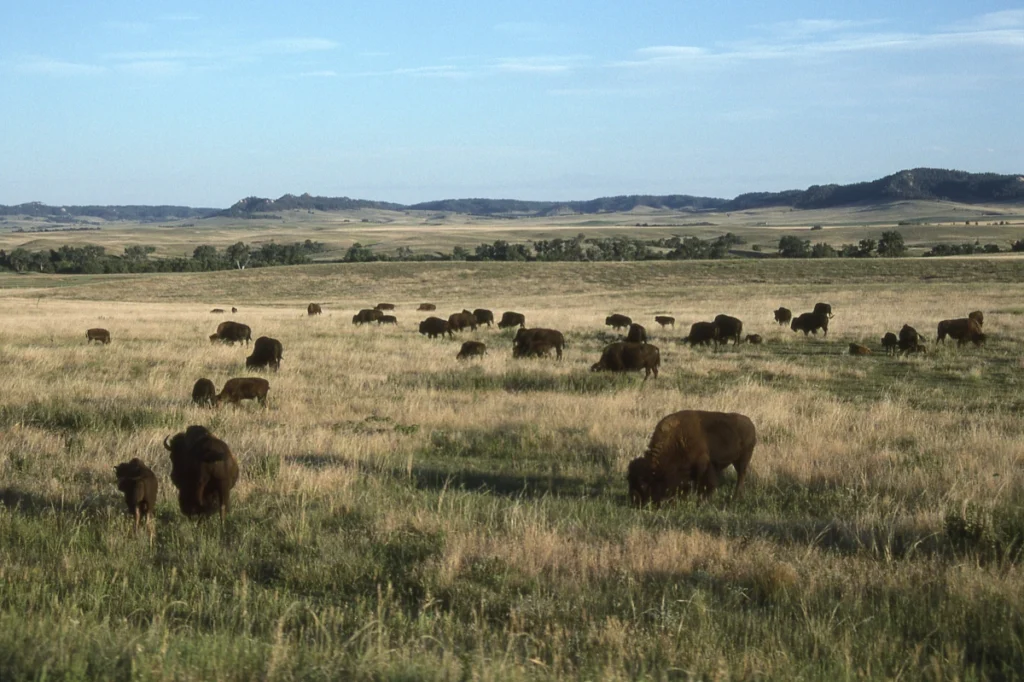
In addition to its natural wonders, Nebraska’s Great Plains is also rich in history and culture. Overlanders have the opportunity to explore various historic and cultural sites that offer a glimpse into the region’s past.
One notable site is Chimney Rock National Historic Site, which served as a landmark for pioneers traveling along the Oregon Trail. Overlanders can visit the site and learn about the challenges faced by these early settlers as they made their way westward.
Another historic site worth exploring is Fort Robinson State Park, which was once a military outpost during the Indian Wars. Today, visitors can tour the historic buildings and learn about the history of the area.
For those interested in Native American culture, there are several tribal museums and cultural centers in the region. These sites offer exhibits and educational programs that provide insight into the traditions and history of the Native American tribes that call Nebraska’s Great Plains home.
When visiting historic and cultural sites, it is important to approach them with respect and a willingness to learn. This includes following any rules or guidelines set by the site, refraining from touching or removing artifacts, and being mindful of the significance of the site to the local community.
Best Times to Visit Nebraska’s Great Plains for Overlanding Adventures
The best time to visit Nebraska’s Great Plains for overlanding adventures depends on personal preferences and the specific activities you plan to engage in. The region experiences four distinct seasons, each offering its own unique charm.
Spring (March to May) is a popular time to visit as the landscape comes alive with blooming wildflowers and migrating birds. The weather is generally mild, although it can be unpredictable with occasional rain showers.
Summer (June to August) is the peak travel season in Nebraska’s Great Plains. The weather is warm and sunny, making it ideal for outdoor activities such as hiking, fishing, and wildlife watching. However, it can also be crowded, especially at popular tourist destinations.
Fall (September to November) is a beautiful time to visit as the leaves change color and the temperatures become cooler. This is a great time for hiking and wildlife watching, as many animals are preparing for winter.
Winter (December to February) offers a unique experience for overlanders who enjoy snow-covered landscapes and winter activities such as cross-country skiing or snowshoeing. However, it is important to note that some roads and trails may be closed or inaccessible during this time.
When planning a trip to Nebraska’s Great Plains, it is recommended to check the weather forecast and road conditions in advance. This will help ensure a safe and enjoyable overlanding experience.
Tips and Tricks for Overlanding in Nebraska’s Great Plains
To make the most out of your overlanding adventure in Nebraska’s Great Plains, it is important to be prepared and knowledgeable. Here are some tips and tricks to help you have a successful trip:
1. Plan and research your route: Before setting off, plan your route and research the areas you will be visiting. This includes checking for any permits or restrictions, as well as identifying any potential hazards or challenges.
2. Pack essential supplies: Make sure to pack essential supplies such as food, water, first aid kit, tools, spare parts, and emergency equipment. It is also a good idea to have a map or GPS system, as well as a communication device in case of emergencies.
3. Practice Leave No Trace principles: When overlanding in Nebraska’s Great Plains, it is important to practice Leave No Trace principles. This means packing out all trash, staying on designated trails, and avoiding damaging vegetation or disturbing wildlife.
4. Be mindful of weather conditions: Nebraska’s Great Plains can experience extreme weather conditions, including thunderstorms and tornadoes. Stay informed about the weather forecast and be prepared to adjust your plans if necessary.
5. Respect private property and local communities: When overlanding in Nebraska’s Great Plains, it is important to respect private property and local communities. Obtain permission before accessing private land and be mindful of noise levels and other potential disturbances.
6. Travel with a group or inform someone of your plans: It is always a good idea to travel with a group or inform someone of your plans before setting off on an overlanding trip. This ensures that someone knows your whereabouts and can assist in case of emergencies.
Safety Precautions to Consider for Overlanding in Nebraska’s Great Plains
While overlanding in Nebraska’s Great Plains can be an exciting adventure, it is important to prioritize safety and be prepared for unexpected situations. Here are some safety precautions to consider:
1. Vehicle maintenance: Before embarking on an overlanding trip, make sure your vehicle is in good working condition. Check the tires, brakes, fluids, and other essential components to ensure they are functioning properly.
2. Carry a first aid kit: A well-stocked first aid kit is essential for any overlanding adventure. Make sure it includes basic supplies such as bandages, antiseptic ointment, pain relievers, and any necessary prescription medications.
3. Have a communication device: It is important to have a reliable communication device in case of emergencies. This can be a cell phone, satellite phone, or two-way radio. Make sure to have a backup power source or extra batteries.
4. Be aware of wildlife: Nebraska’s Great Plains is home to a variety of wildlife, some of which can be dangerous if approached or startled. Be aware of your surroundings and keep a safe distance from any wildlife you encounter.
5. Be prepared for emergencies: It is important to be prepared for emergencies while overlanding in Nebraska’s Great Plains. This includes having a plan in case of vehicle breakdowns, getting lost, or encountering severe weather conditions.
6. Know your limits: Overlanding can be physically and mentally demanding, especially in remote areas. Know your limits and don’t push yourself beyond what you are comfortable with. Take breaks when needed and listen to your body.
Why Overlanding in Nebraska’s Great Plains is a Must-Do Adventure
Overlanding in Nebraska’s Great Plains offers a unique and captivating experience for outdoor enthusiasts. From the natural wonders and diverse wildlife to the rich history and culture of the region, there is something for everyone to discover.
Whether you are an experienced overlander or new to the adventure, Nebraska’s Great Plains provides endless opportunities for exploration and discovery. By planning and preparing for your trip, practicing Leave No Trace principles, and prioritizing safety, you can have a truly unforgettable overlanding adventure in Nebraska’s Great Plains. So, pack your bags, hit the road, and get ready to experience the beauty and wonder of Nebraska’s Great Plains.
If you’re looking for an exciting overlanding adventure in Nebraska, check out this article on “Where to See Wildlife in the National Parks Throughout the Year” by Overlanding America. Nebraska is home to several national parks and wildlife refuges that offer incredible opportunities to spot a diverse range of wildlife. From bison herds in the prairies to migratory birds along the Platte River, Nebraska’s natural landscapes are teeming with wildlife. Discover the best spots and seasons for wildlife viewing in this informative article. Read more
FAQs
What is overlanding?
Overlanding is a type of self-reliant travel where the journey is the primary goal, often involving off-road vehicles and camping equipment.
What are some popular overlanding destinations in Nebraska?
Some popular overlanding destinations in Nebraska include the Sandhills, the Pine Ridge area, and the Nebraska National Forest.
What kind of vehicle do I need for overlanding in Nebraska?
A four-wheel drive vehicle with high clearance is recommended for overlanding in Nebraska, as many of the roads and trails are unpaved and can be rough.
Do I need a permit to go overlanding in Nebraska?
Permits are not required for overlanding in Nebraska, but some areas may require a camping permit or have specific rules and regulations.
What kind of camping equipment do I need for overlanding in Nebraska?
Basic camping equipment such as a tent, sleeping bag, and cooking supplies are necessary for overlanding in Nebraska. It is also recommended to bring a portable stove and water filtration system.
What are some safety tips for overlanding in Nebraska?
Some safety tips for overlanding in Nebraska include bringing plenty of water and food, letting someone know your travel plans, and being prepared for changing weather conditions. It is also important to respect wildlife and leave no trace.
